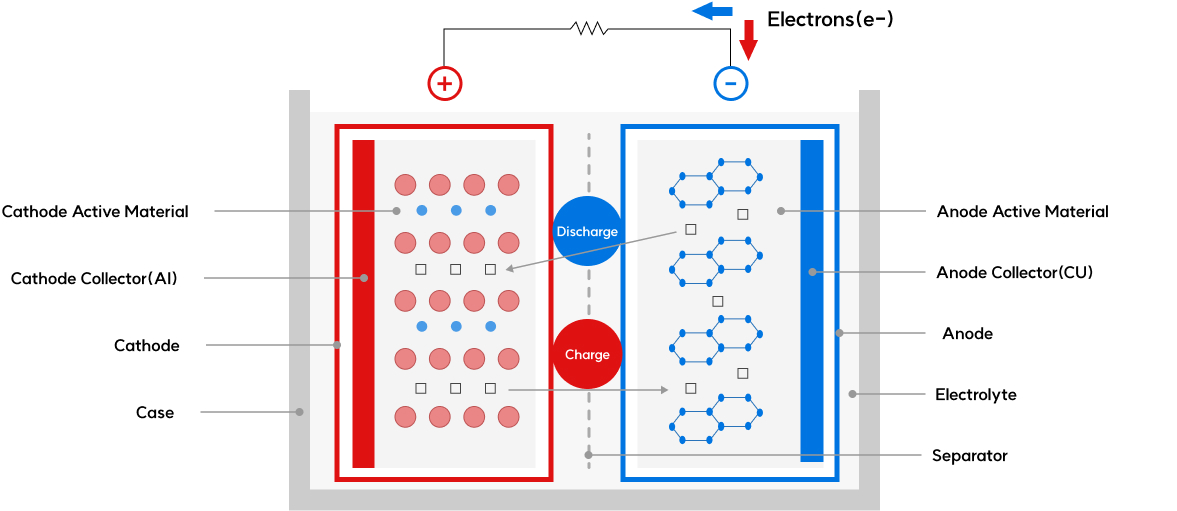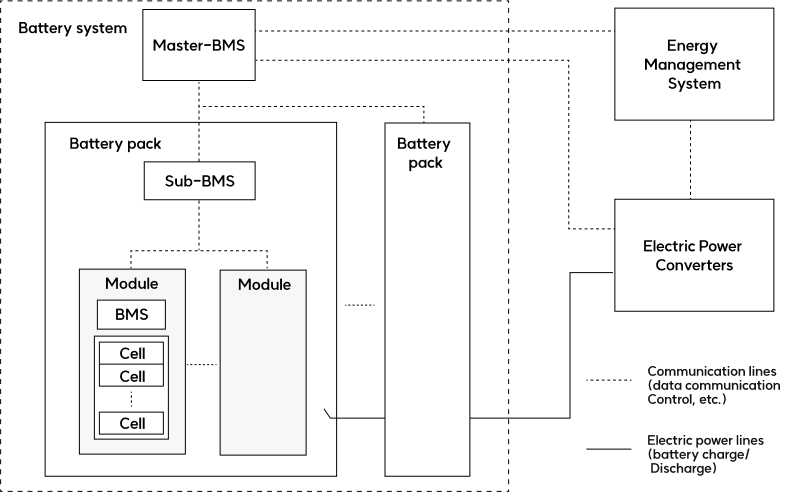The increasing interest in environmental issues has led to a growing application of eco-friendly power sources, such as battery systems, in ships. Although battery systems can be composed of various types of batteries such as lithium-ion batteries, redox flow batteries, and supercapacitors, the Korea Register of Shipping currently regulates "ship battery systems" specifically limited to lithium-ion batteries.
Lithium-ion batteries operate by the movement of lithium ions between the cathode and anode through a chemical reaction, which results in electrochemical oxidation-reduction reactions that charge and discharge the battery.

Lithium-ion Principle

Fig 1 Block diagram of battery system (2023)
Batteries are devices that can charge and discharge limited amounts of energy and have advantages such as high efficiency and high momentary response characteristics. Due to space and weight constraints on ships, they are primarily used as the main and auxiliary power sources for inland waterway ships that mainly operate short distances, passenger ships, car transport ships, marine operation support ships, dredgers, and so on.
When a battery system is applied as the main power source for a ship, it must be configured as a redundant system with at least two independent systems in two separate compartments to ensure stability as the ship's main power source.
Korea Register of Shipping is conducting research in various fields such as next-generation batteries, battery life prediction, and fault diagnosis to apply battery systems more safely to ships. Through various research and development, it will provide solutions to customers to safely and efficiently apply battery systems.